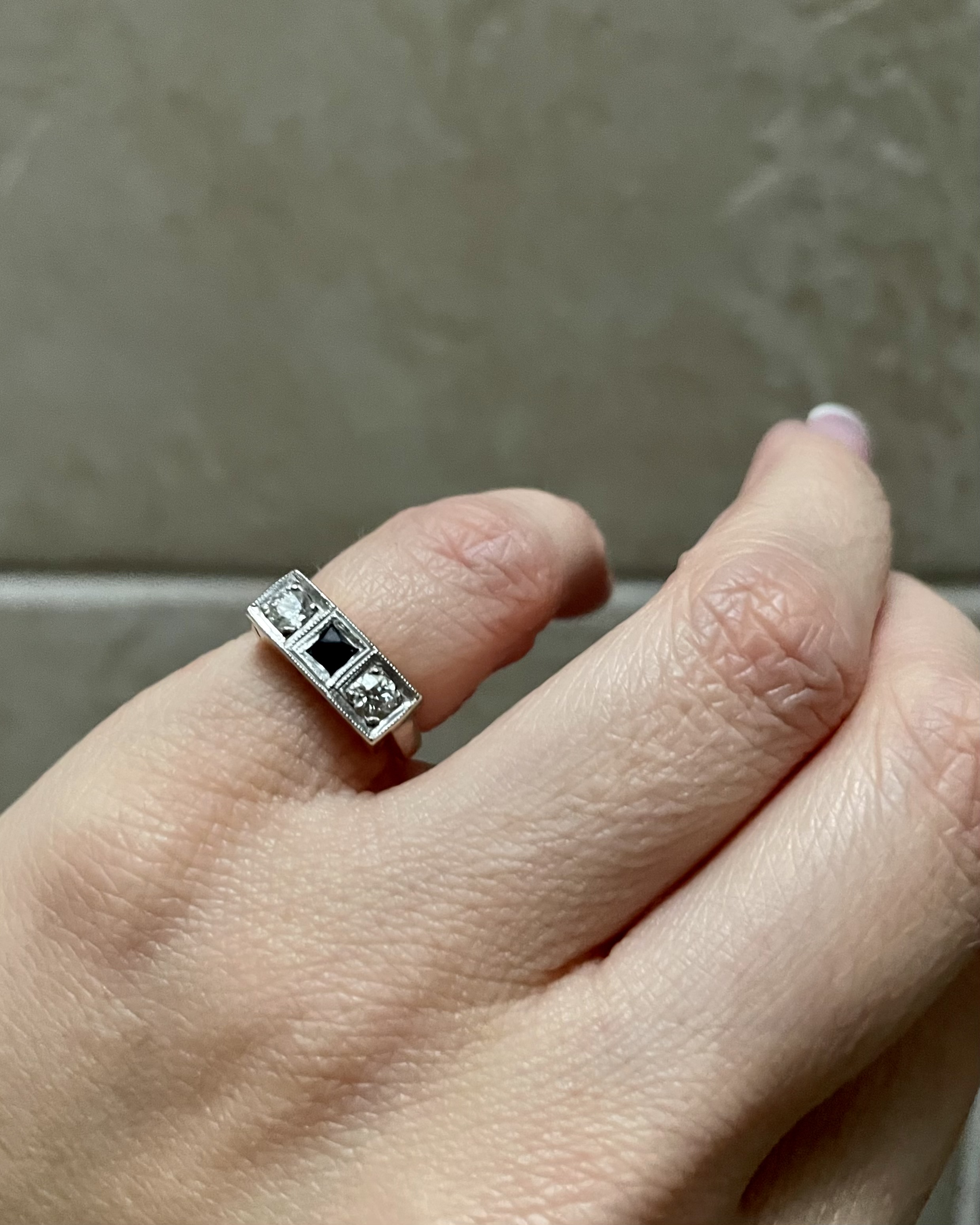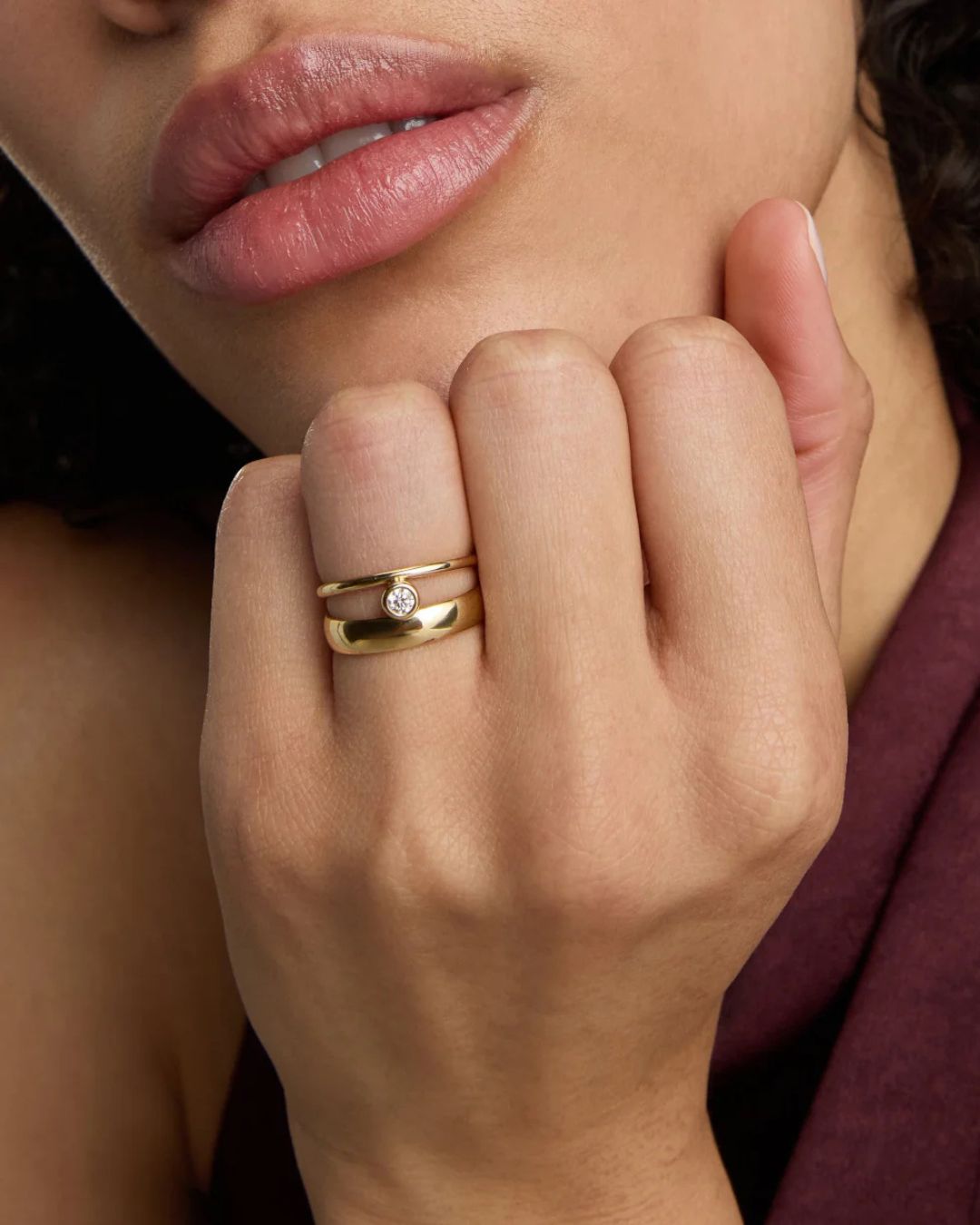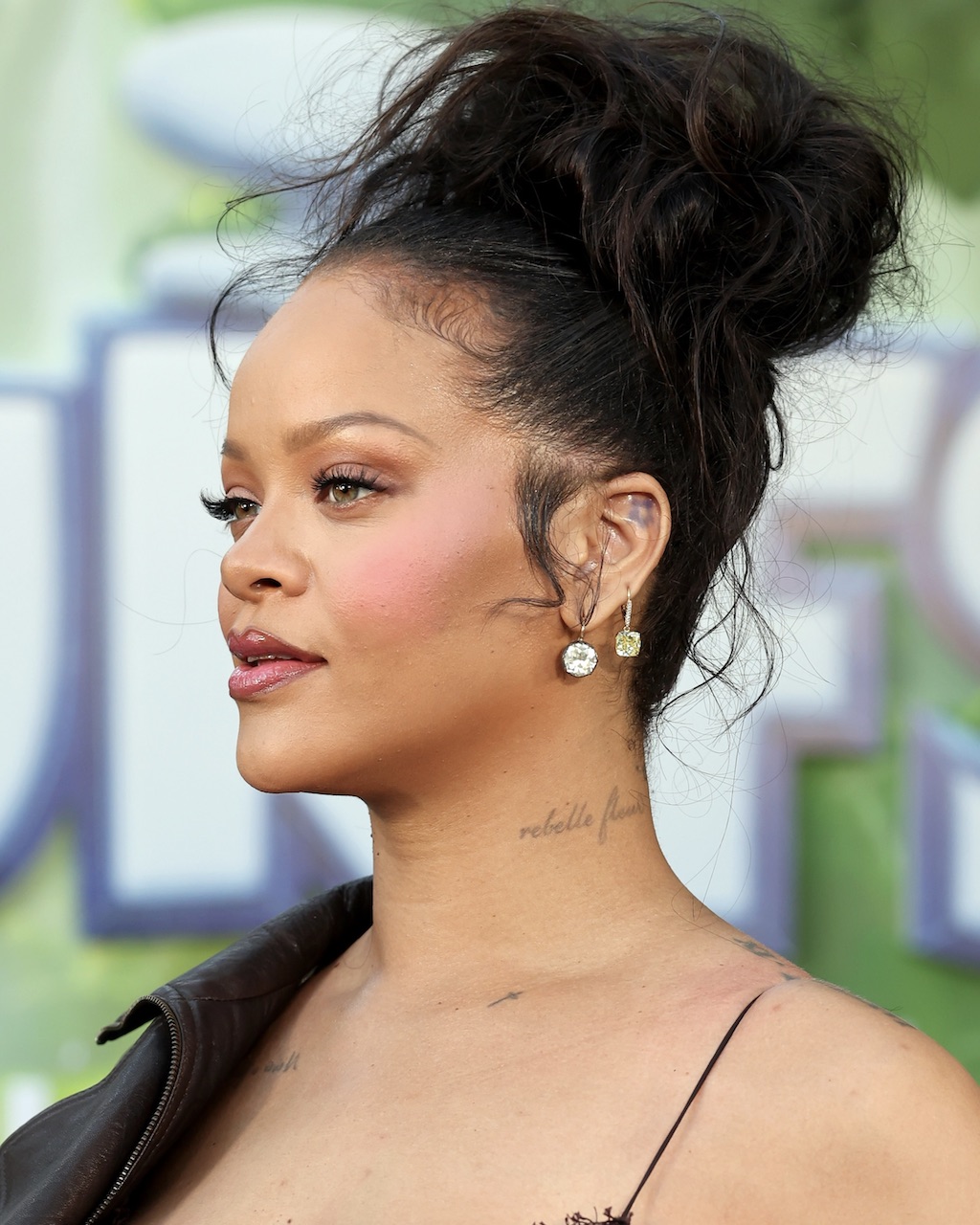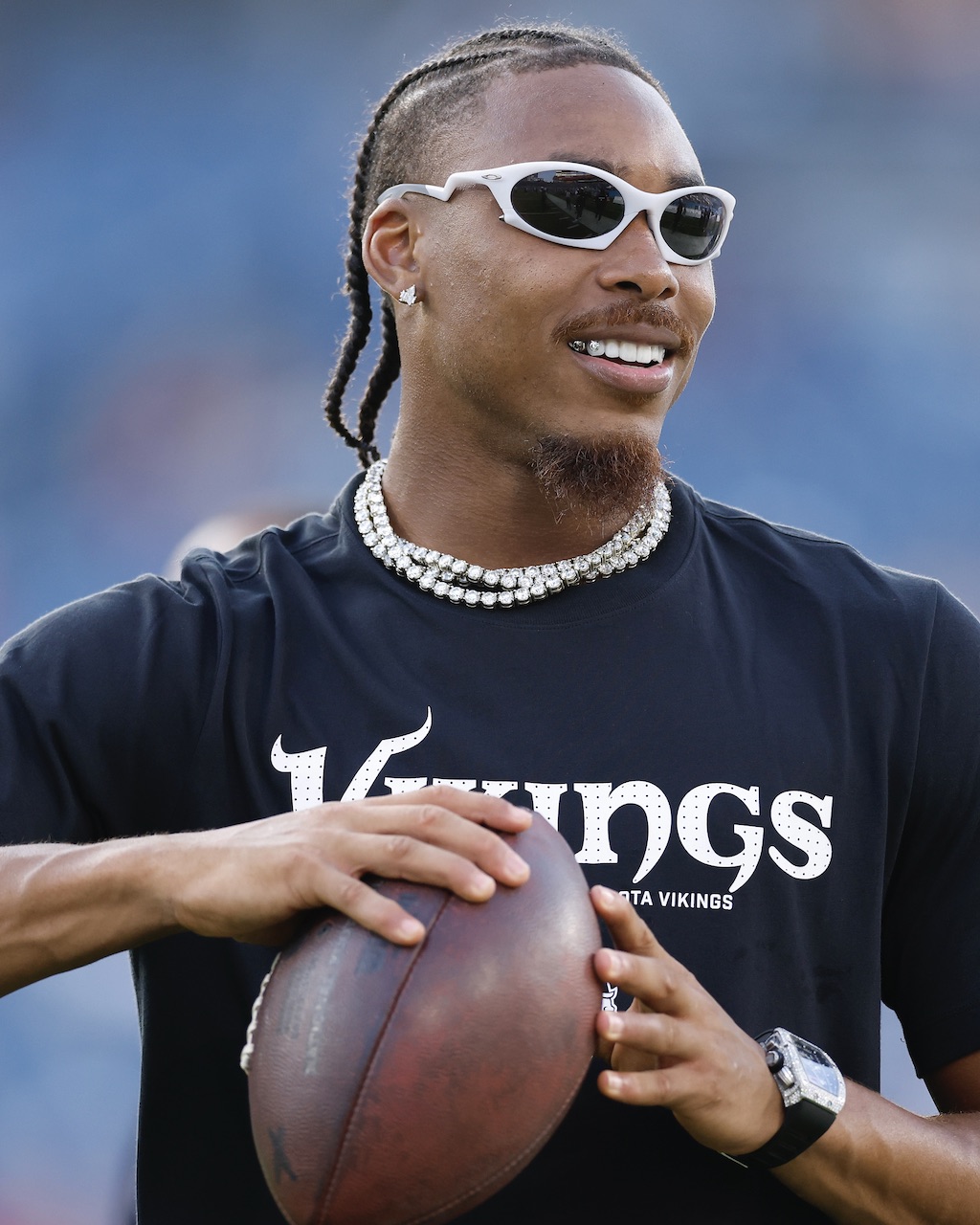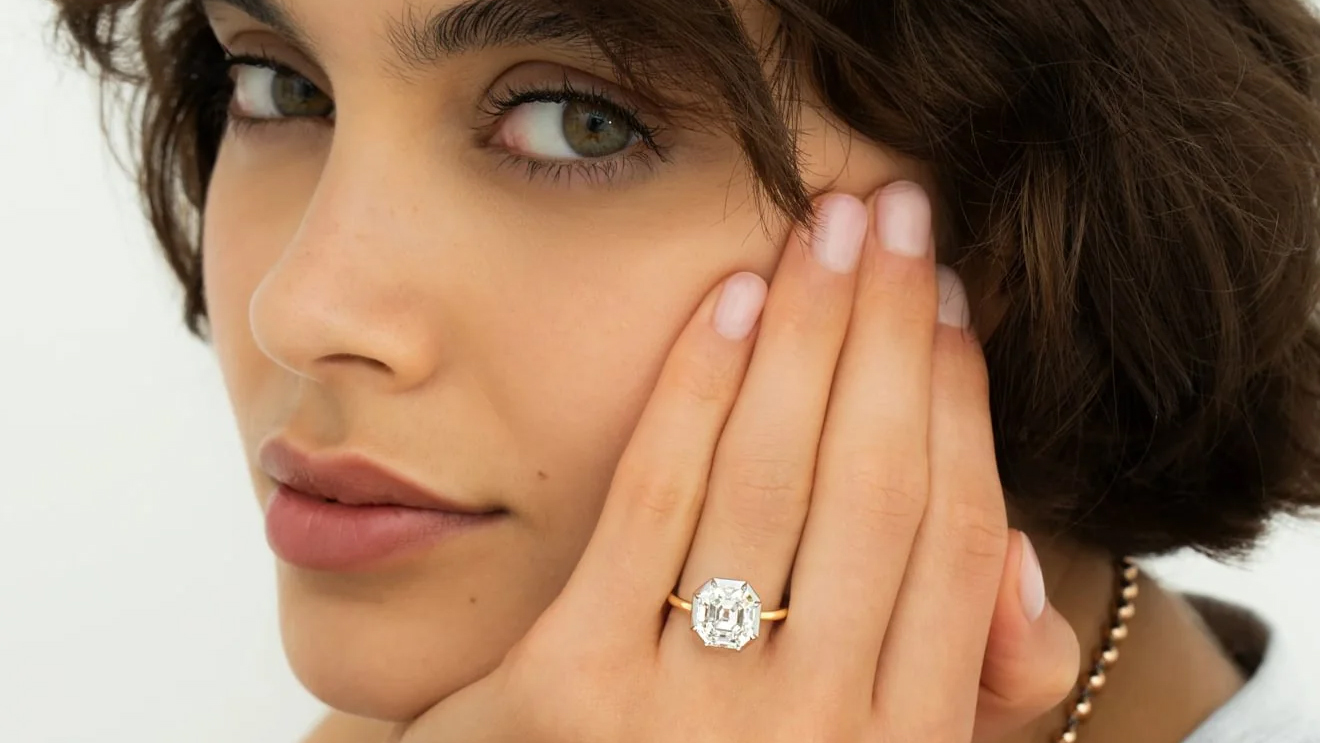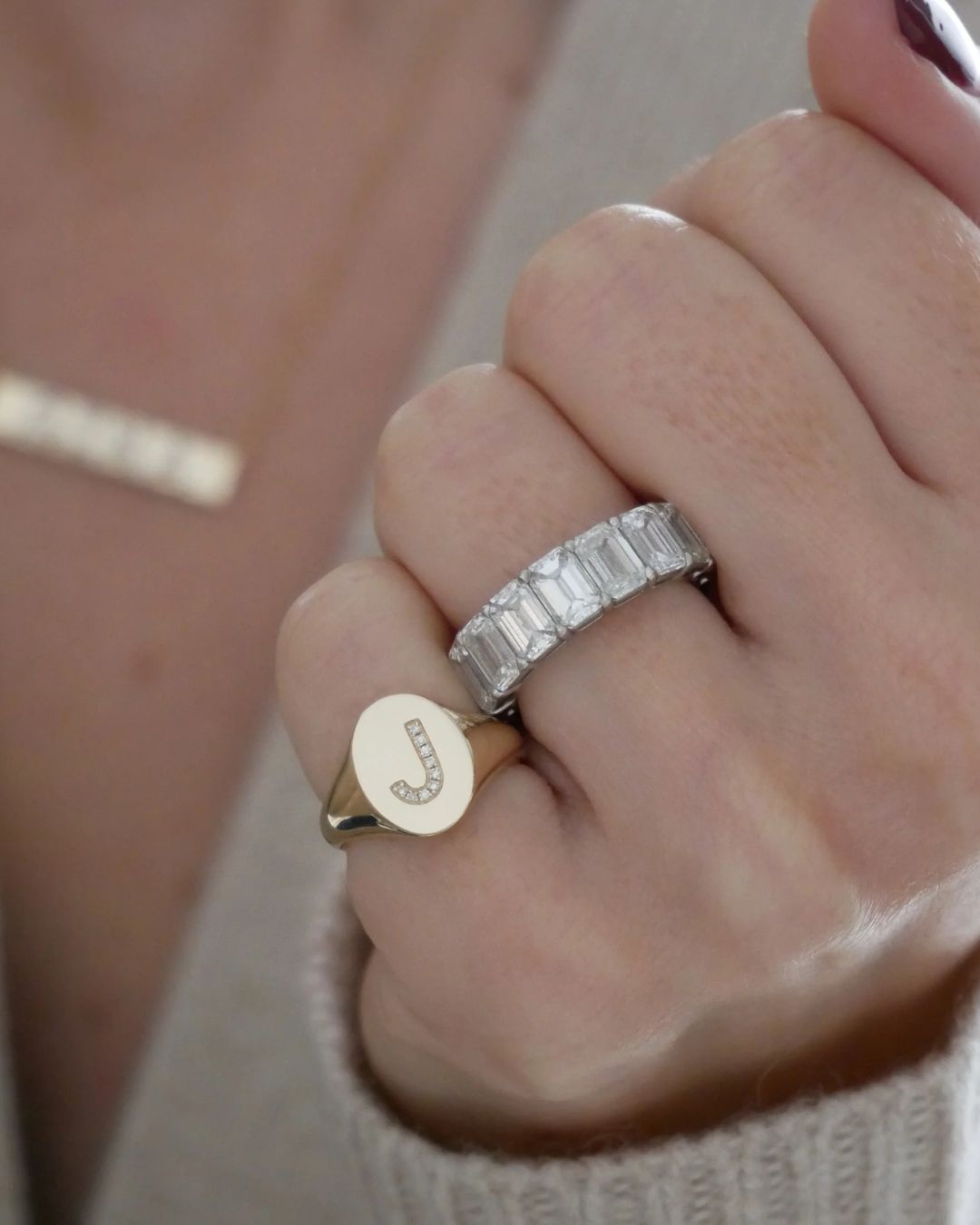< Historic Diamonds / Royal Stories
The Spectacular History of the Danish Crown Jewels
From Queen Mary’s dazzling jewelry appearances to centuries-old royal gems, explore the legacy of Denmark’s diamond regalia.
Updated: October 16, 2025
Written by: Meredith Lepore
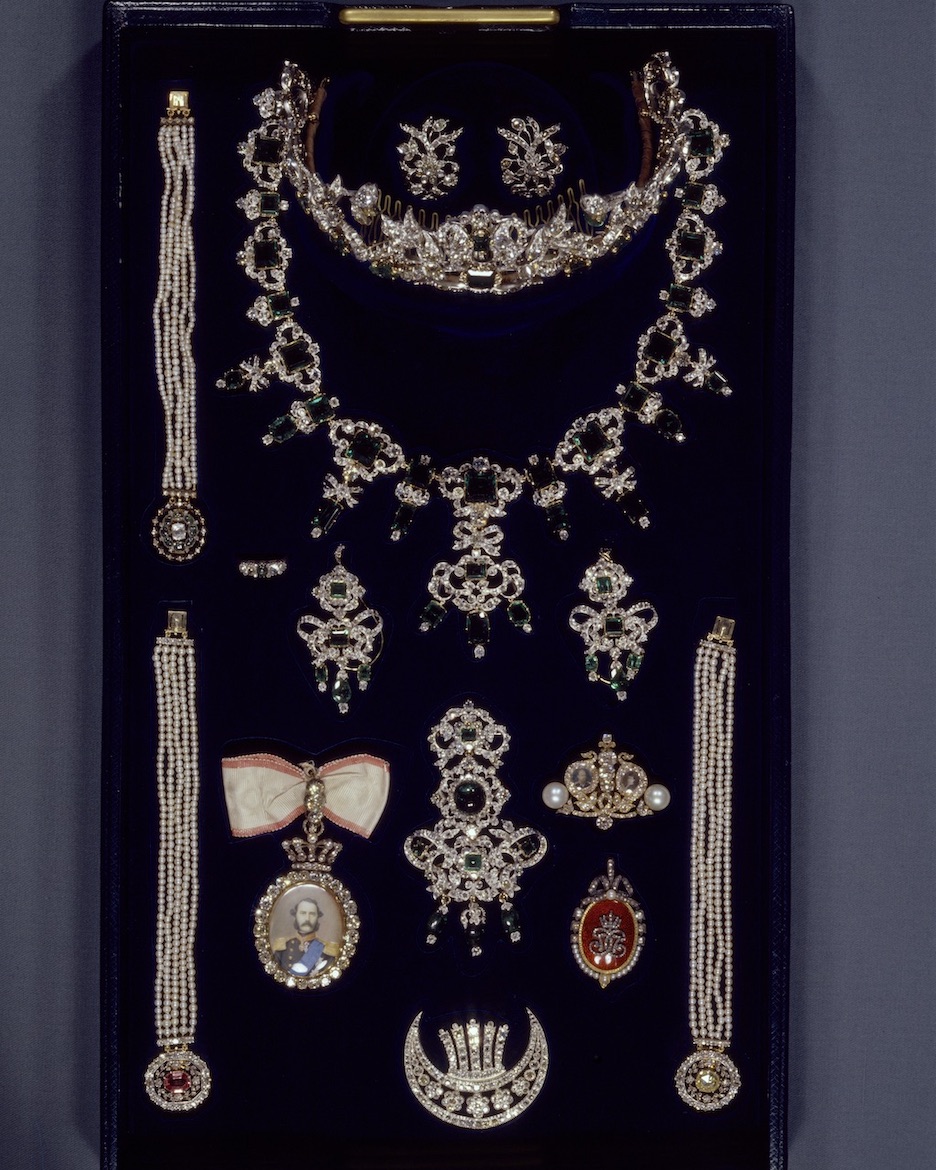
Another day, another opportunity for Queen Mary of Denmark to show off her impeccable style. This time, at the opening ceremony for Parliament in Copenhagen, Queen Mary was joined by her husband, King Frederik. She opted for a cream skirt created by Italian designer Lunatica Milano, paired with a navy crepe knit jacket by Australian brand Scanlan Theodore. She paired the modern garments with stud earrings and a matching brooch from one of the four parures from the Royal Danish Crown Jewels collection.
Since her husband was crowned King in January of 2024, Queen Mary is often seen wearing an array of spectacular jewels from this extensive collection, including recently sporting the Danish Rose Diamond Bandeau tiara. (You can really go from a good day to a bad day when you throw a tiara in the mix. )And why wouldn’t she? Wearing the Danish Crown Jewels is the ultimate royal flex, and though she already has impeccable taste, these bring any outfit to the next level.
Meet the Expert

- Thomas C. Thulstrup has been the Museum Director for the Royal Danish Collection at Rosenborg and Amalienborg since 2018.
- He holds degrees in art history and economics, and is an author of works including Georg Jensen sølv & design and Raadvad – de første 250 år.
- He also serves as chairman of the Hempel Foundation and sits on the board of Experimentarium, in addition to curating jewelry exhibitions and supporting design heritage.
In addition to the four dazzling parures—a brilliant-cut diamond set, an emerald set, a pearl-ruby set, and a rose-cut diamond—there is a wealth of individual heirlooms that include jeweled orders, brooches, and ceremonial pieces passed down through generations of queens. Each piece of the Danish Crown Jewels tells something about this country’s remarkable story, blending artistry, symbolism, and centuries of courtly tradition.
Ahead, we’ll take a look at one of the most unique, complete and historically intact collections of royal jewels in the world, still worn for the most glittering state occasions today.
Wars, Castles and Scandal: The History of the Danish Crown Jewels
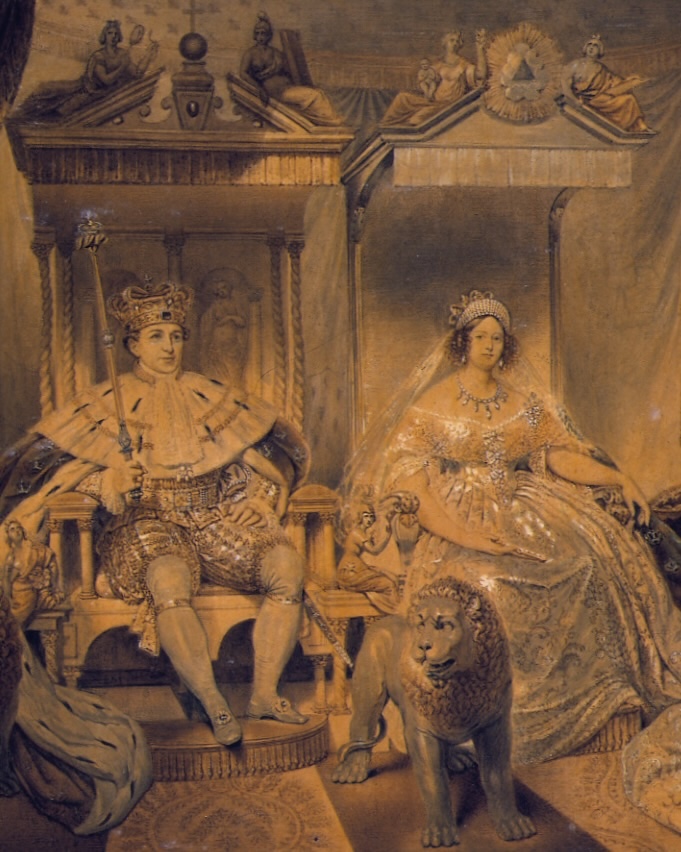
The origins of the Danish Crown Jewels date back to the 16th century, when King Christian IV began assembling them. During his reign, he expanded the royal treasury with precious stones and elaborate creations that symbolized Denmark’s growing power.
Known as the most progressive King in Danish history (and a heavy drinker), he was quite busy during this time period, dealing with the Thirty Years’ War (1618-1648) and setting domestic reform and economic policies that would impact Denmark forever.
He made some incredible cultural advancements in the arts and urban planning. It was also under his reign that Rosenborg Castle would be constructed, which would house the future Danish Royal Crown collection.
If the Danish Crown Jewels could talk, they would tell you a lot. They have been on the losing side of the Napoleonic Wars (during King Frederick VI’s reign) and have seen major scandals involving Queen Caroline Matilda, who cheated on her husband, King Christian VII with his physician. She was later banished to Kronberg, where she died at the age of 23, but she had some stunning wedding rings.
The Danish Crown Jewels collection has not only survived but has also evolved and thrived over hundreds of years. “During the age of absolutism, the regalia symbolized the monarch’s divine right to rule. Today, they are understood as symbols of the Danish realm and its democratic governance,” Museum Director Thomas C. Thulstrup of The Royal Danish Collection says. “The Danish crown jewels are unique in a European context because they are a jewelry collection tied directly to the Crown—not to a family lineage, but to the institution of the monarchy itself.”
Who Owns The Danish Crown Jewels?
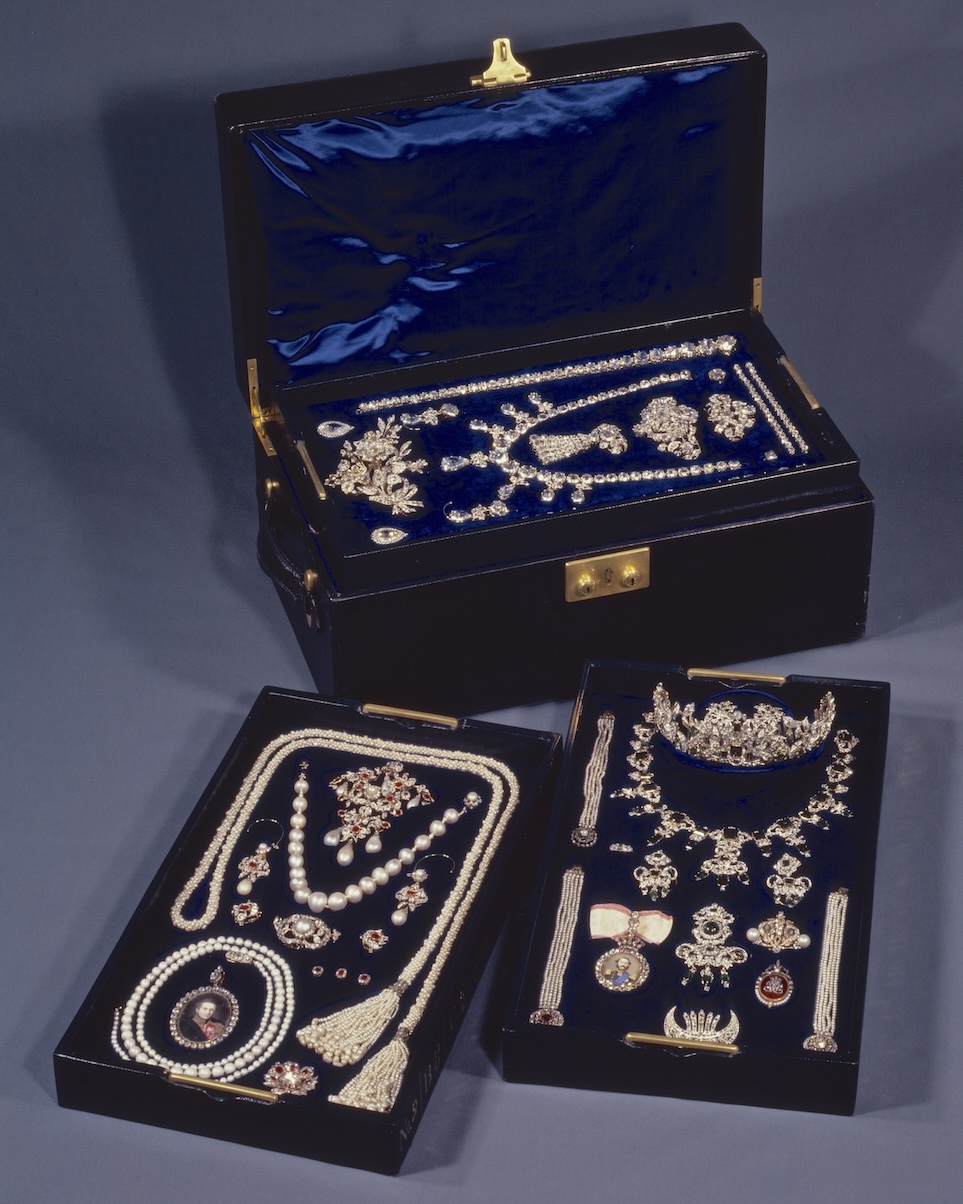
Where the Royal Danish Jewels are kept today shows a lot about the family behind them. They are officially owned by the Crown of Denmark but worn only by the reigning queen.
When King Christian VI died in 1746, Queen Sophie Magdalene left a will specifying that her personal jewelry should remain “with the crown” rather than be passed to heirs. She wanted whoever was the reigning Queen at the time to have their own special collection of Royal Jewels to always have access to. Magdalene noted that, “ …in this Royal House, there are so few jewels and not any crown jewels at all.”
How the Danish Jewels Collection Evolved Over Time
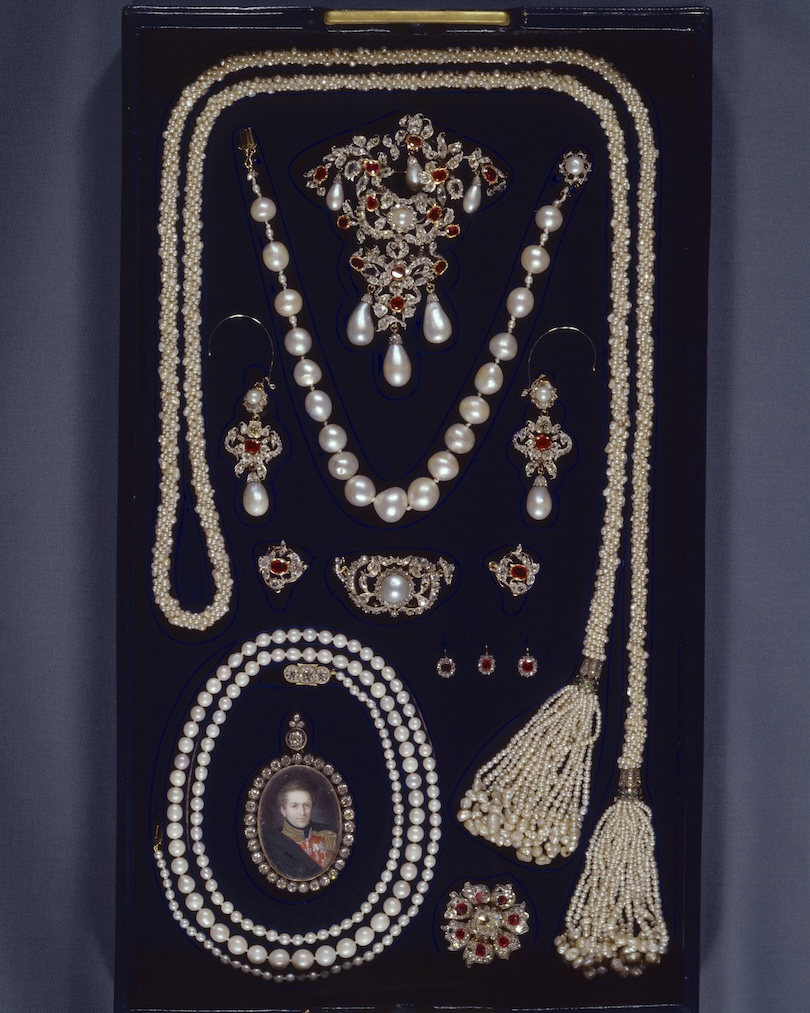
Over time, most of Queen Sophie Magdalene’s original jewelry has been modified and updated by subsequent queens. Christian VIII’s queen, Queen Caroline Amalie, made changes to the four crown jewel sets or parures in 1840 that remain present today.
Thulstrup says, “The jewels are available today to the reigning queen and worn only within the borders of the realm. Over the centuries, they have been worn and adapted by Danish queens in respect for tradition, but also tailored to each queen’s personal taste and needs. Thus, the jewels represent both history and the ongoing renewal and adaptation of the monarchy.”
Queen Sophie Magdalene’s will created a collection that has since followed the Danish monarchy, passed down intact from generation to generation, though certainly not untouched. The jewels have been adapted over time to suit changing tastes and needs, and their exceptional gemstones tell the story of how they’ve been worn and used.
For example, Thulstrop noted that the large diamond at the center of the diamond necklace has changed position multiple times throughout history—from Queen Sophie Magdalene’s hairpin, to the scandal-ridden Queen Caroline Mathilde’s wedding rings, and now as the centerpiece of the impressive necklace worn by HM Queen Margrethe II at the wedding of King Frederik X and Queen Mary in 2004.
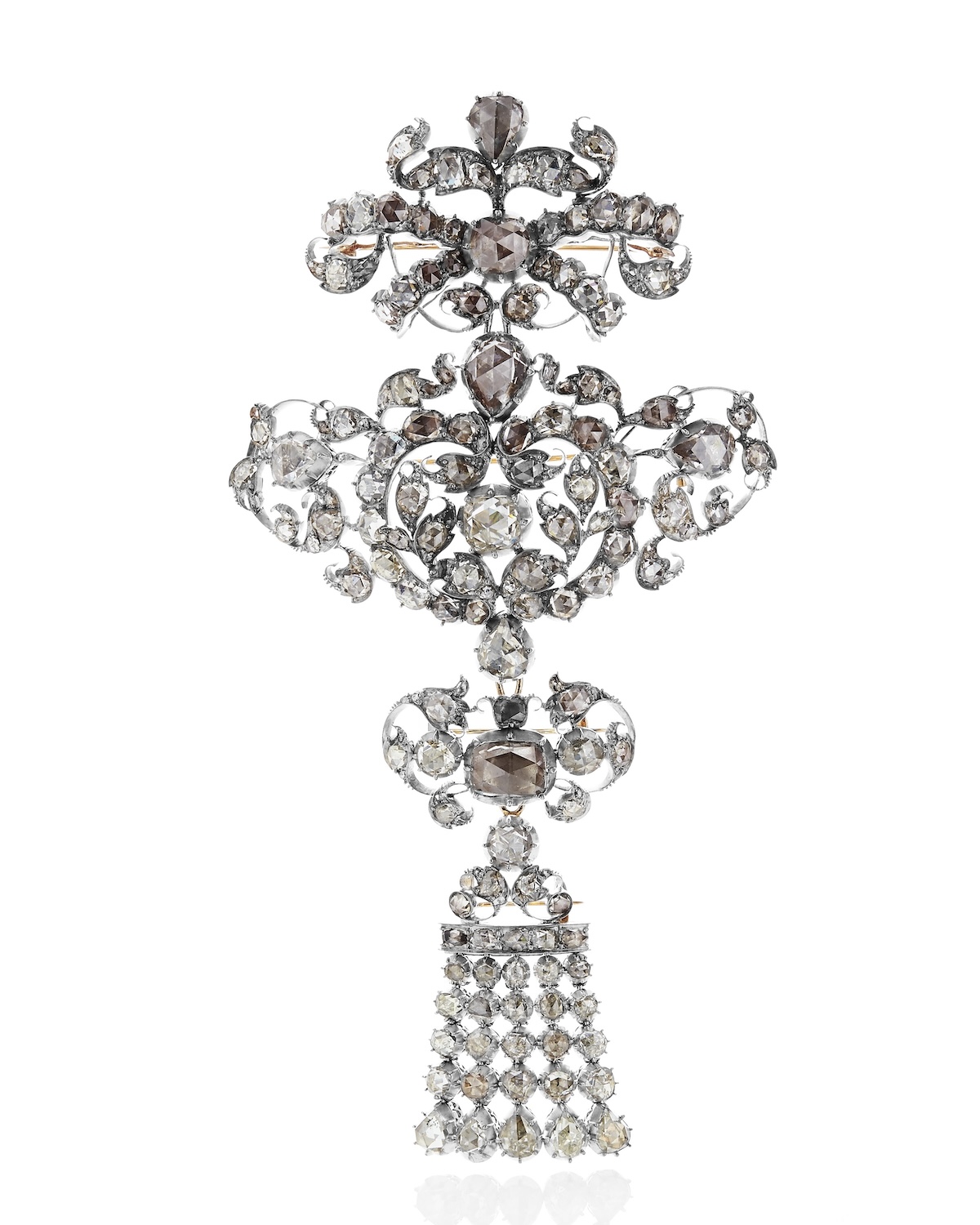
Where are the Royal Danish Crown Jewels Kept?
When the Danish Crown Jewels aren’t on display, they are secured in a vault beneath Rosenborg Castle, allowing visitors to admire their beauty and historical significance.
In addition to just being stunning jewels with rich history and drama—Netflix should consider doing a Danish version of The Crown—they also double as museum pieces and working royal accessories, making them different than any other crown jewels in the world.
Also note that these stunning treasures never leave Denmark, so when Queen Mary travels abroad, she opts for pieces from her own collection or from the Danish Royal Property Trust instead.
From Regal Parures to Timeless Gems
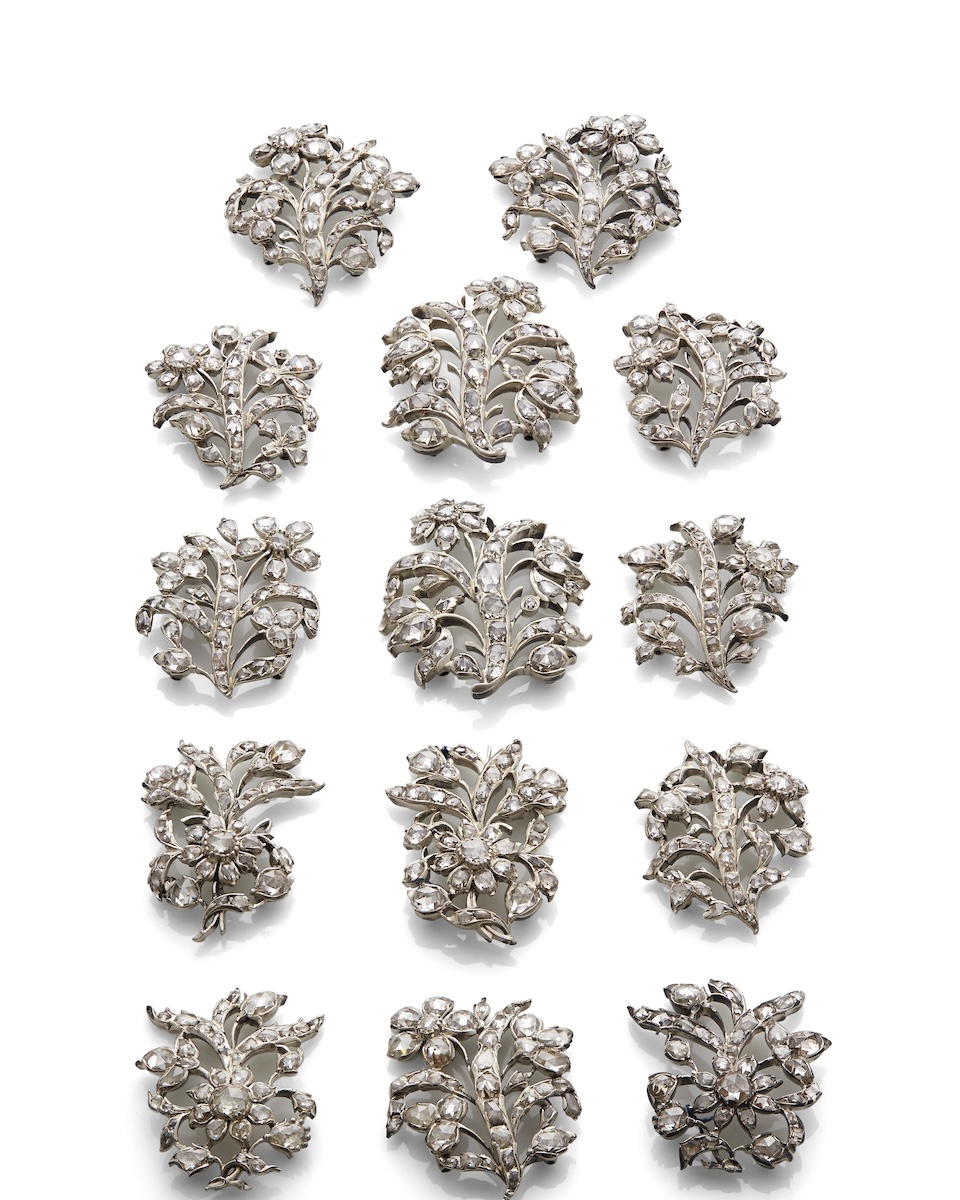
The Danish Royal Collection is made up of two different groups: the Crown Regalia, which includes the crowns, scepter, orb, and sword, and the Danish Crown Jewels (which are the ones we care about a bit more, as they are worn at events besides a monarch’s passing).
The Danish Crown Jewels collection includes the parures, which consist of tiaras, necklaces, earrings, brooches, and bracelets, as mentioned above. As you will learn, they are often worn by Queen Mary for various events like state dinners.
Most of the Danish Crown Jewels were created or acquired in the 19th century, commissioned by Queen Caroline Amalie, the second wife of King Christian VIII. She enlisted the German goldsmith firm C. M. Weishaupt & Söhne to craft the collection into several stunning parures: a crown diamond set, an emerald parure incorporating emeralds originally given to Sophie Magdalene in 1723, a pearl-and-ruby parure, and rose-cut diamond parures that transformed older diamonds into more wearable, modern sets.
Thulstrop adds that while the most valuable pieces, such as the diamond set, were likely crafted in Copenhagen by visiting goldsmiths from the firm, the pearl-ruby and emerald sets were made in Hanau, where the gemstones were sent.
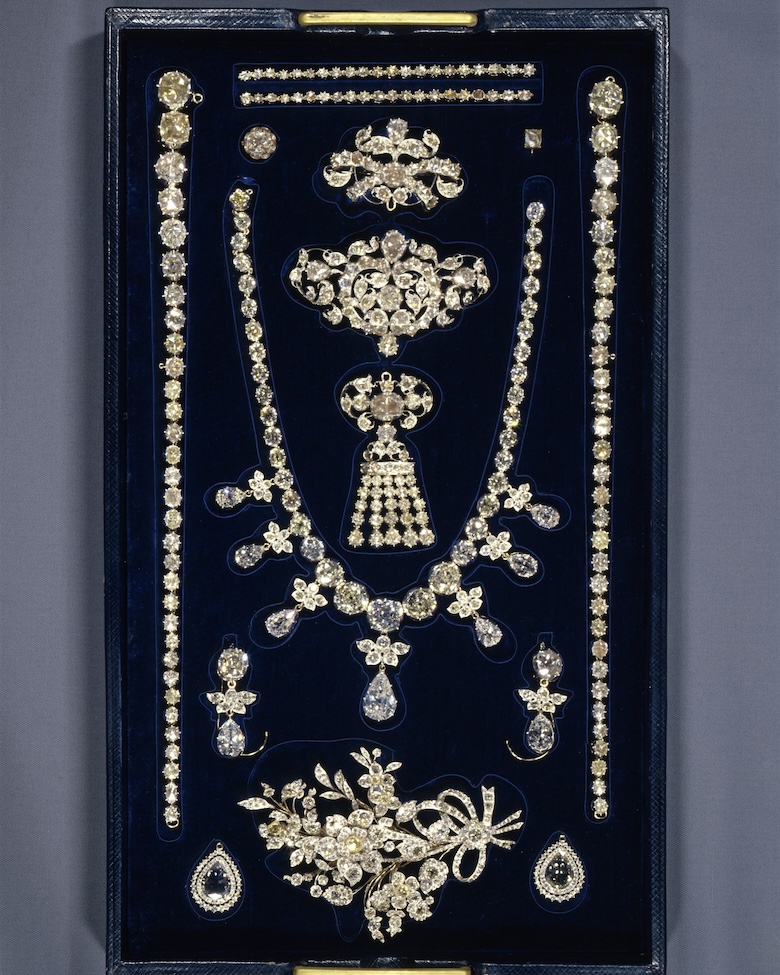
At that time, the jewels were assembled into sets, or garnitures, which became fashionable after Napoleon I’s coronation in Paris in 1804, and set new standards for jewelry design. These sets allowed Queen Caroline Amalie, who initiated the redesign in the 1840s, to wear coordinated pieces, as seen in the emerald set consisting of a tiara, necklace, corsage, and earrings. “The emerald set’s decorative motifs—scrollwork and plant designs—mirror the Biedermeier style that was in vogue during its creation,” he says.
Queen Margrethe II of Denmark, who abdicated the throne in 2004 after a 52-year reign, was a frequent wearer of the Royal Crown Jewels. There was even an exhibit in 2022 to celebrate her favorite jewels. Her collection is especially impressive as it spans ties to other European royal houses in England and Greece, as her lineage includes Queen Victoria and Princess Margaret of Sweden.
The Diamond Parure: Brilliant-Cut Gems That Define Danish Royal Splendor
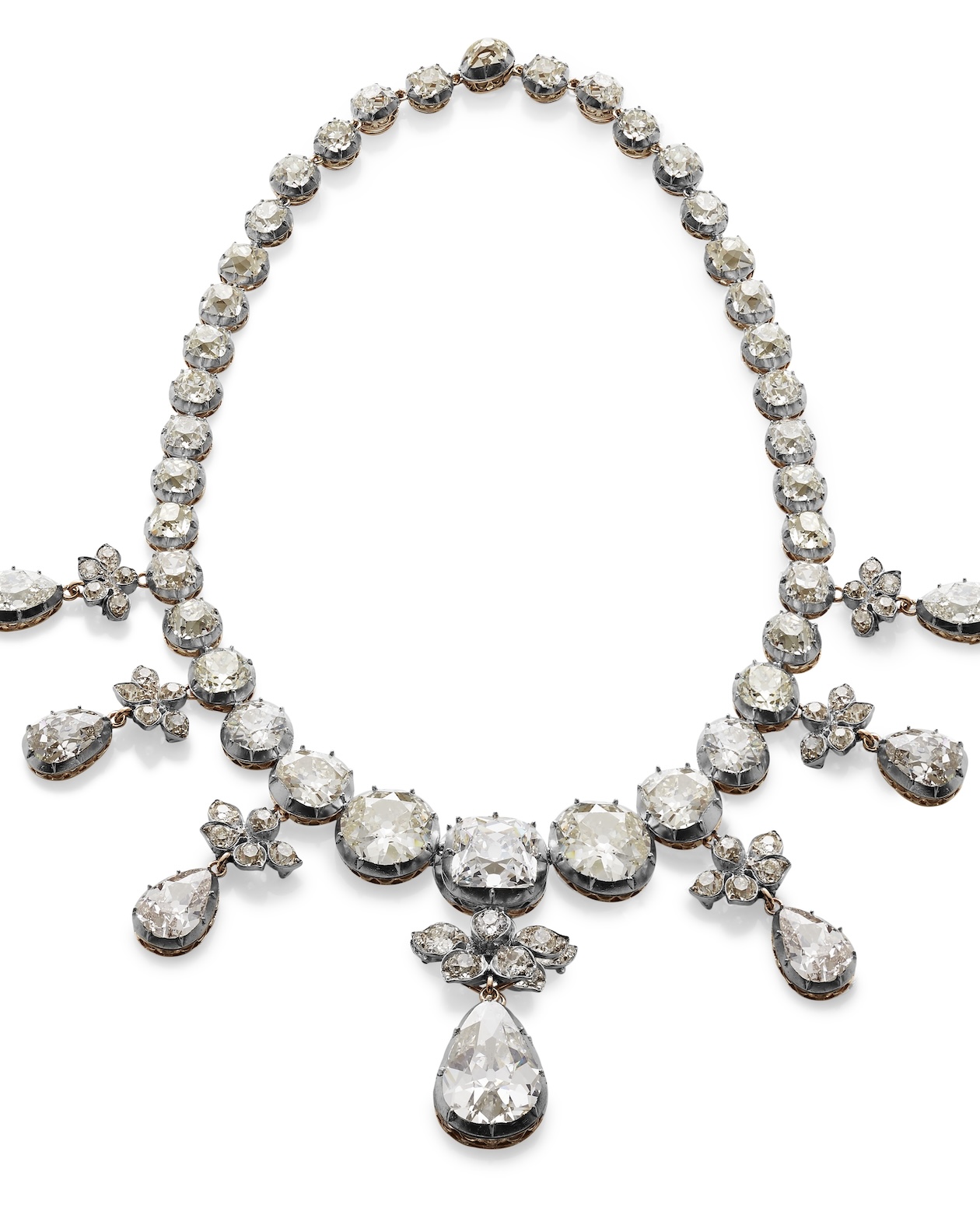
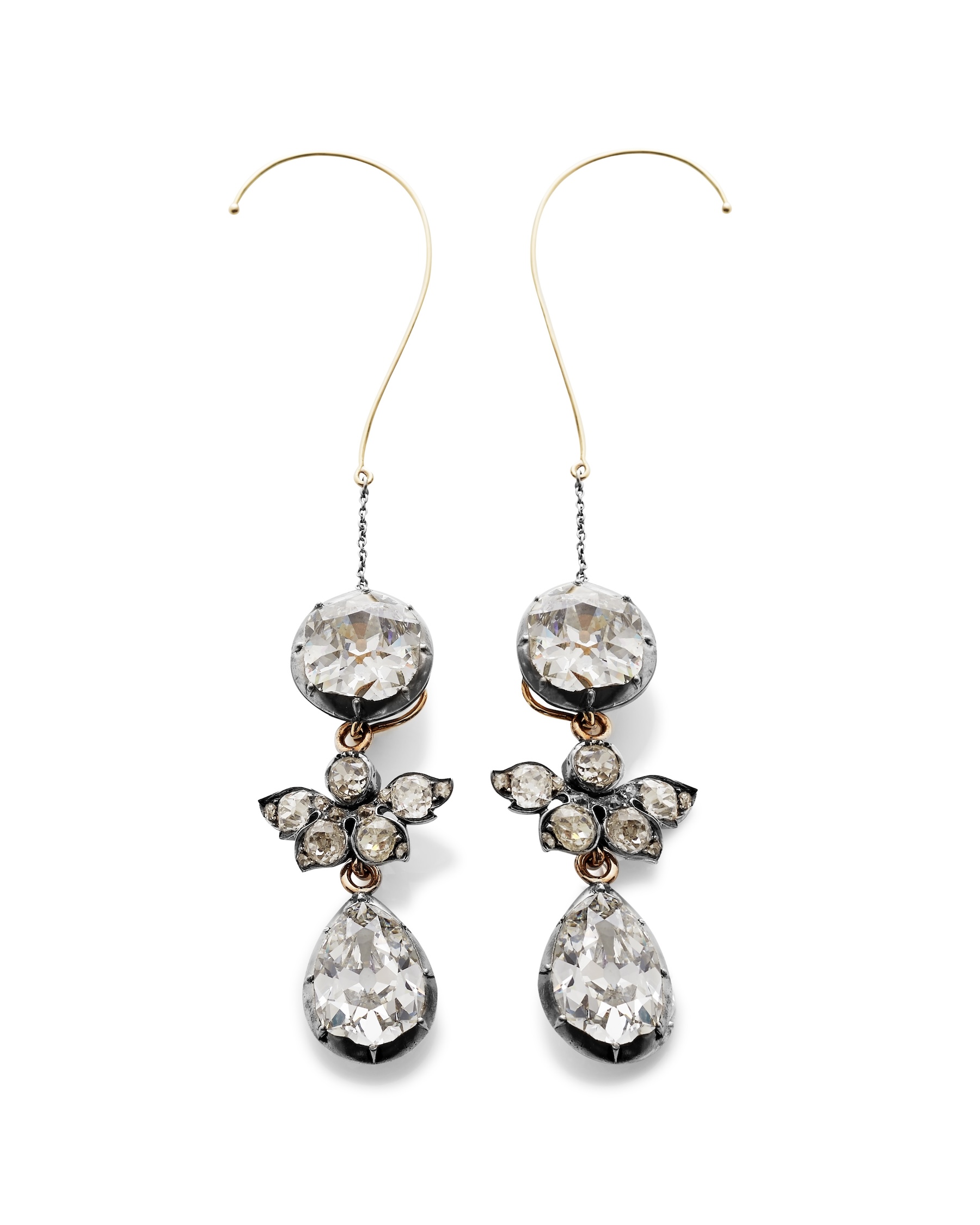
The legacy of the Danish Crown Jewels continues to inspire awe and admiration among royal enthusiasts.
Oh, what a magnificent piece this is. It is more than jewelry, it is poetry in the form of diamonds. Crafted by C.M. Weishaupt & Söhne for Queen Caroline Amalie’s coronation, this set includes a grand necklace with seven swinging pendants, a corsage brooch, matching earrings, and two bold pear-shaped drops.
The necklace was inspired by a similar piece Emperor Napoleon once gifted to his second wife, Marie Louise. But as Thulstrup notes, the Danish version features much larger diamonds—and is considerably more valuable (take that Napoleon).
It’s a true mosaic of royal history, bringing together treasures from generations of Danish queens: The earrings were originally owned by Queen Juliane Marie, the largest pendant once belonged to Queen Sophie Magdalene, and the six smaller pendants came from Queen Caroline Mathilde. Queen Louise was also a fan and known to bring it out when she wanted to show off the big guns during her short reign from 1906 to 1912.
“How the sets have been understood, interpreted, and used over time says more about the context and perception of jewelry in each era than about the jewels themselves. The era of grand jewels around 1900—marked by the rise of overseas gemstones and platinum—left no trace on the Danish crown jewels. Compared to the lavish pieces of the British or former Russian royal collections, the Danish jewels may appear modest at first glance. But this is due to their historical age and the fact that they were not created to dazzle the public or the camera lens,” Thulstrop says.
The Emerald Parure: A Royal Treasure of Green Majesty
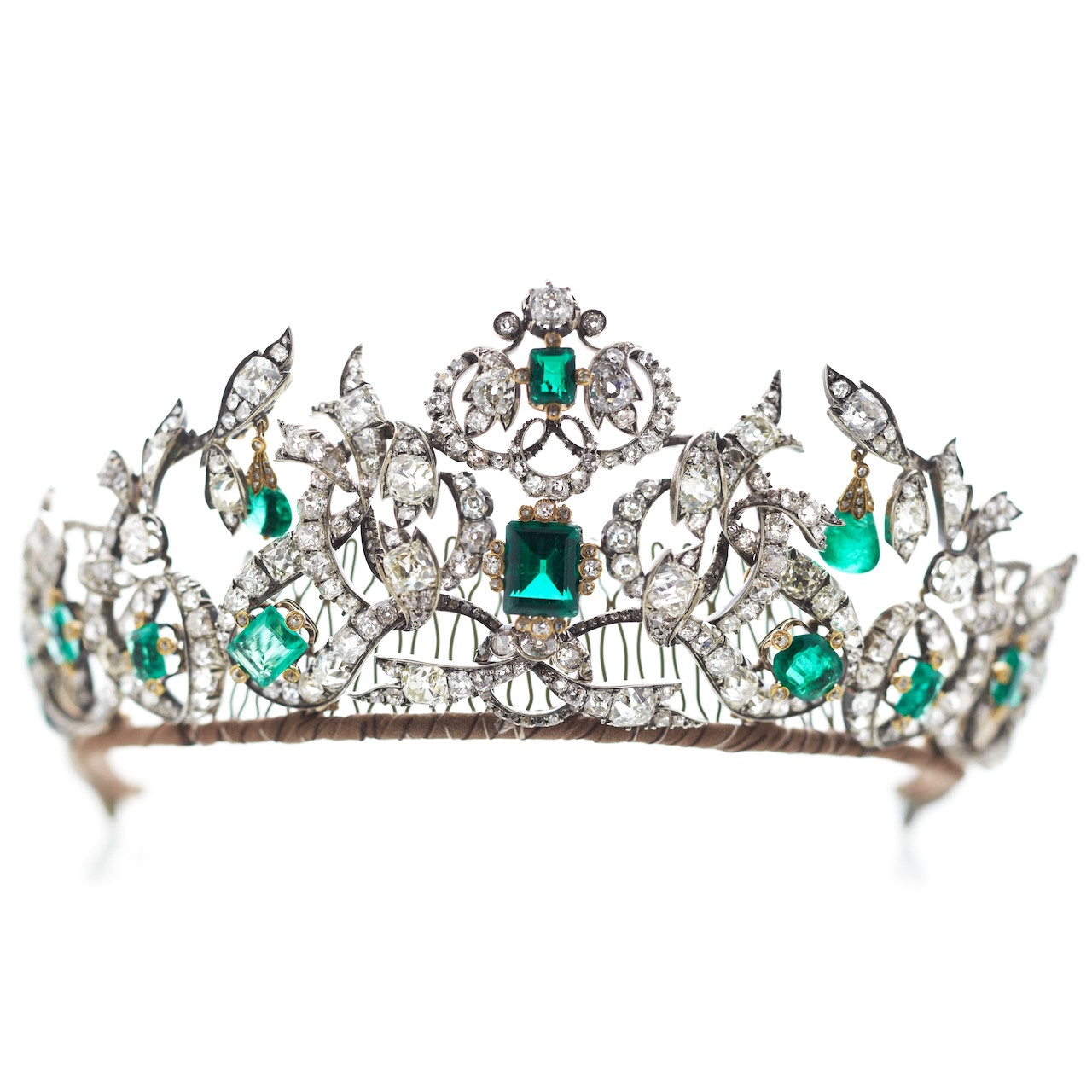
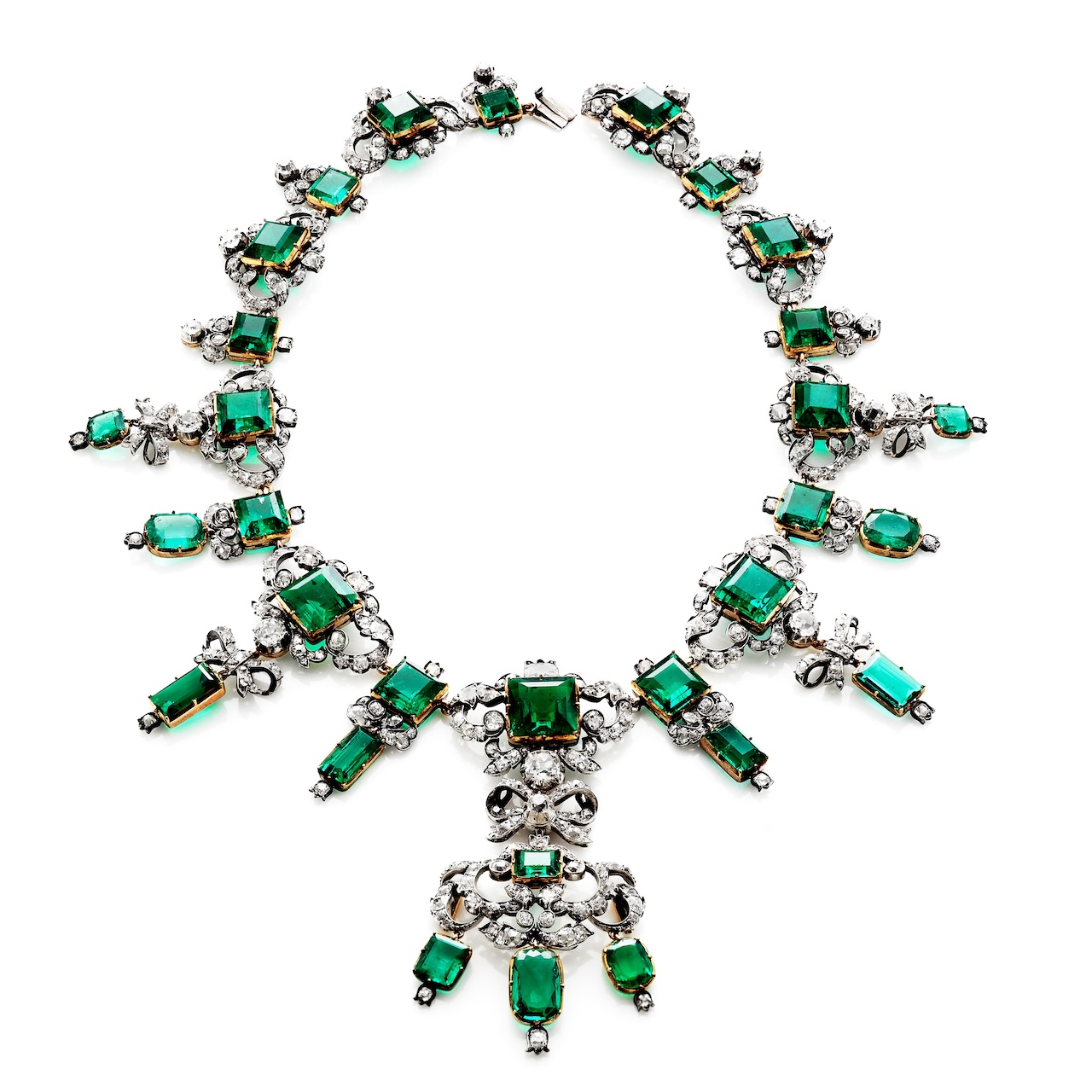
These Danish Crown Jewels never leave Denmark; when Queen Mary travels abroad, she selects pieces from her own collection or the Danish Royal Property Trust.
Another masterpiece created under Queen Caroline Amalie by C.M. Weishaupt & Söhne. In 1840, they took emeralds and made them into an exquisite necklace, earrings, brooch, and tiara. The emeralds can pop so profoundly because of those brilliant-cut diamonds. King Christian VI commissioned this parure as an anniversary present for Queen Sophie Magdalene. Queen Mary recently wore this set for an official Royal Portrait.
The Pearl and Ruby Parure: The Queen’s Romantic and Regal Heirloom
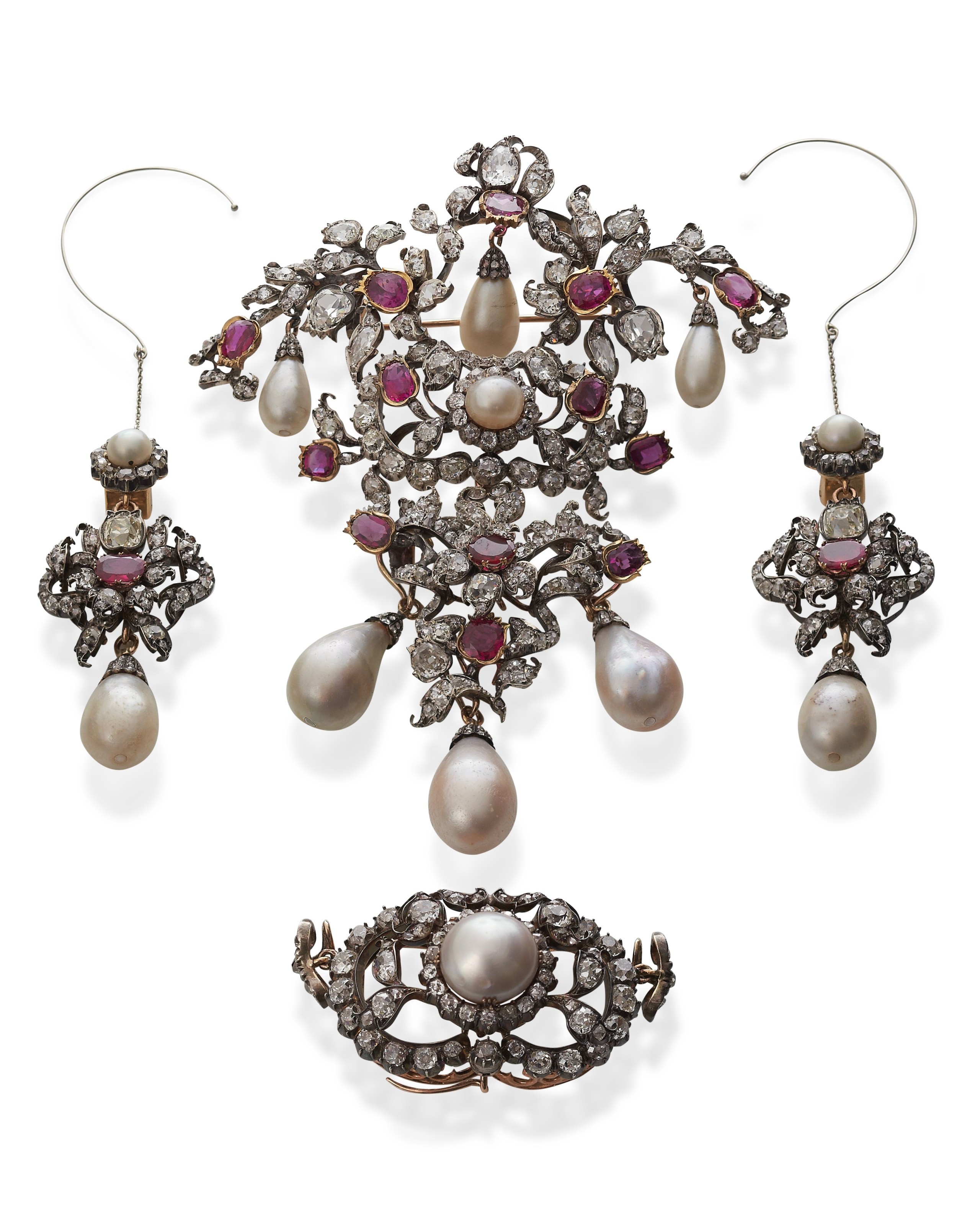
This is another Sophie Magdalene piece that was beautifully reworked by Queen Caroline Amalie to make an exquisite creation blending pearls and rubies into earrings, brooches, necklaces, and tiara pieces. Often worn for coronations, official portraits, state dinners, and other events, the pieces of the collection are modular, meaning a brooch can also be a pin, and necklace dangle lengths can be altered, adding versatility to a classic.
The Rose-Cut Diamond Parure: A Modern Revival of Historic Brilliance
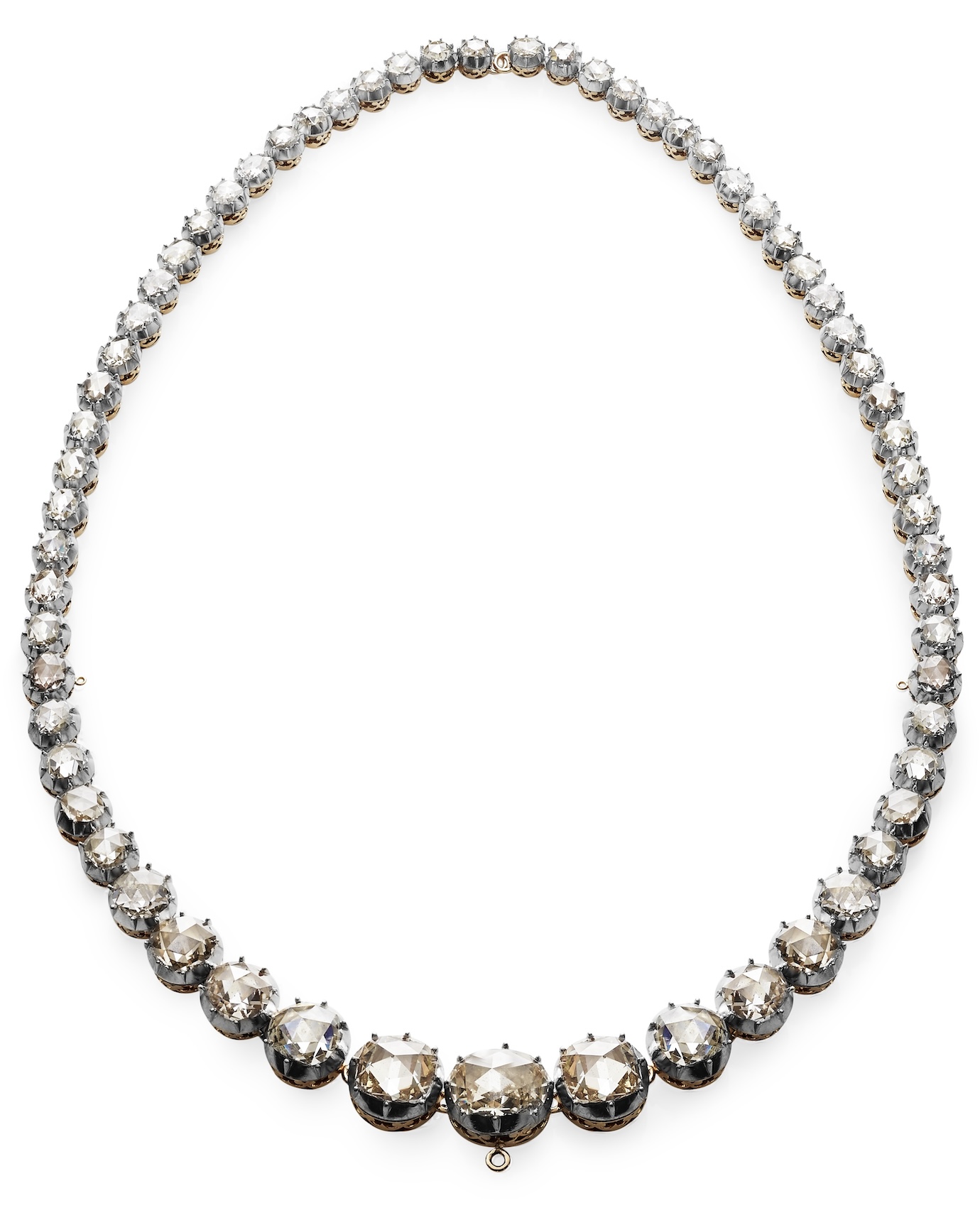
These diamonds, cut like small roses, perfectly catch the light, making them more stunning every time they are worn. The jewels in this set were updated in the 19th century, taking the older diamonds and assembling them into necklaces, earrings, and brooches.
The Danish Crown Jewels represent both history and the ongoing renewal and adaptation of the monarchy.
A standout from this collection is the Danish Rose Diamond Bandeau Tiara commissioned by Queen Mary. It features rose-cut natural diamonds that were once part of a diamond belt owned by Princess Charlotte Amalie of Denmark in the 1700s.
The Legacy of the Danish Crown Jewels
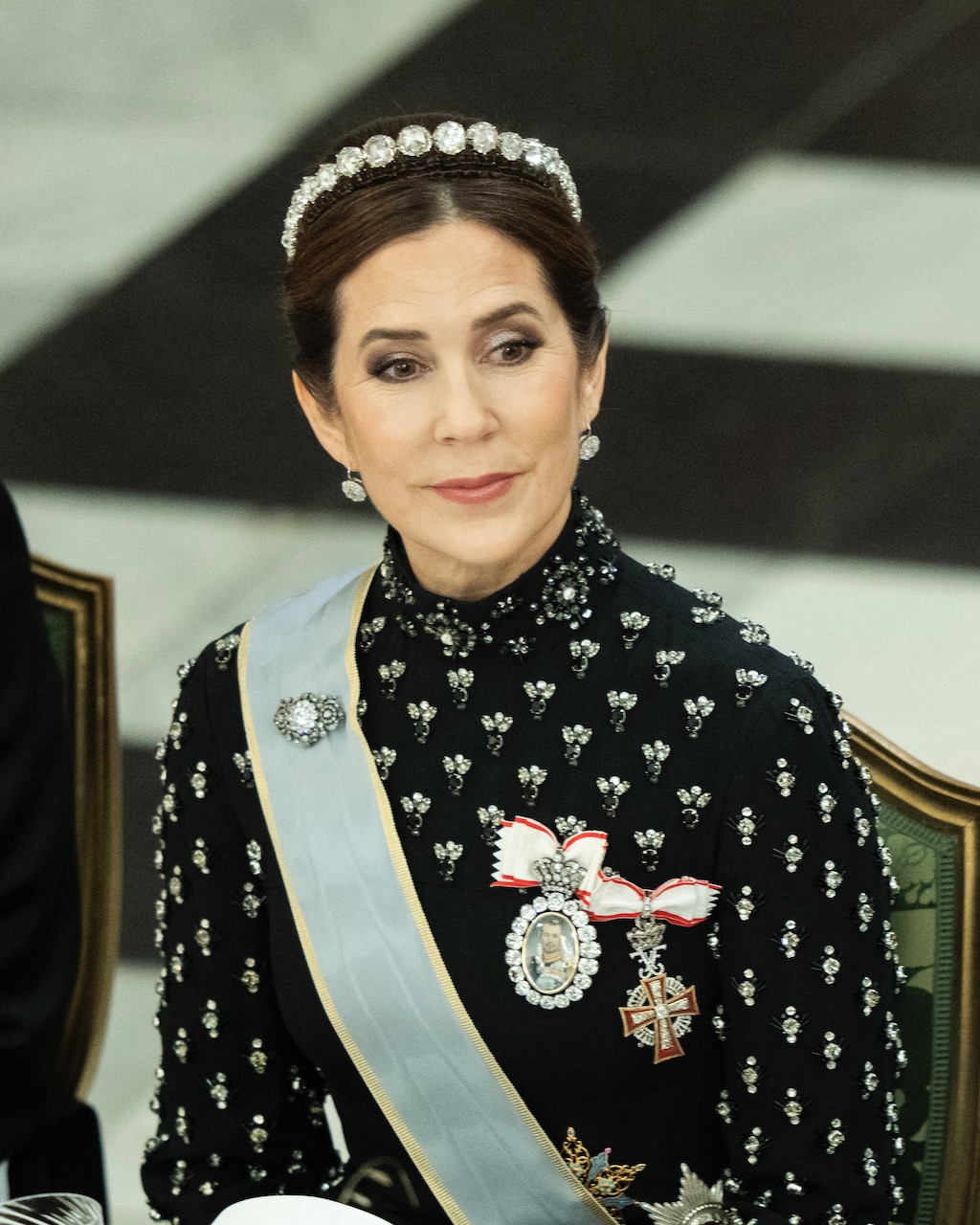
The enduring legacy of the Danish Crown Jewels lies in their ability to evolve while preserving centuries of royal heritage. Each generation has reinterpreted them—sometimes with lavish flair, sometimes with understated grace—yet always with deep respect for their history.
Their careful preservation and continued use are a testament to Denmark’s living monarchy, where tradition and modernity coexist in glittering harmony.
As new pieces like Queen Mary’s rose-cut diamond tiara emerge from the archives, the Danish Crown Jewels remind us that even the oldest treasures can shine anew in the hands of a new queen.
